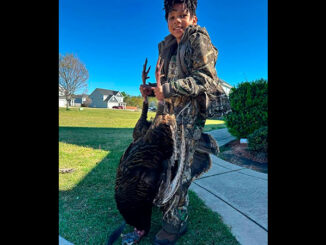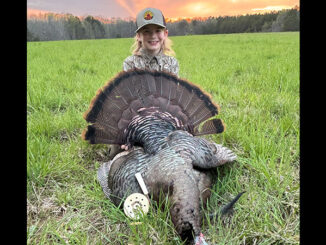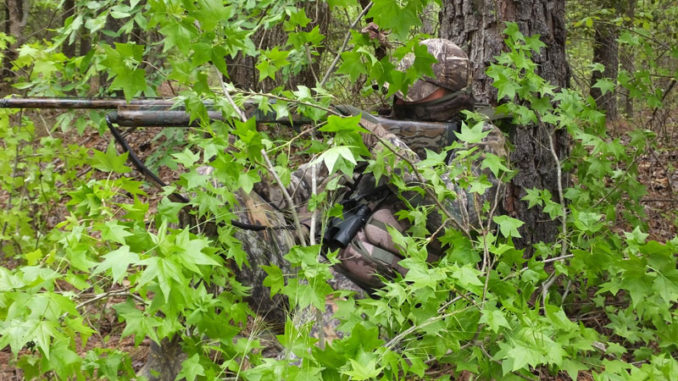
Try these ideas from veteran turkey hunters and you’ll be a step closer to putting a tag on a nice Carolina gobbler this month.
Turkey hunting in the Carolinas pits hunters against more than just a gobbler’s sharp eyes, absurd hearing and vigilant persona. Successful hunters must also adapt to extreme habitat diversity, ranging from mature mountains to swamps. Coping with these complex situations often forces hunters to employ more than one strategy to be consistently successful.
Experienced hunters have learned to be successful in diverse situations and here’s some tactics by highly successful Carolina “gobbler getters.”
Hide in a natural blind
Staying hidden from an approaching gobbler is crucial to success anywhere you hunt. Guide Tyler Chappell of Fountain Inn, S.C., said he doesn’t always have the luxury of gobblers coming to predetermined spots.
“I love hunting from ground blinds, but often to get on a gobbler, I have to hoof it,” Chappell said. “I enjoy hunting gobblers on foot, but it entails improvising setups on the fly. Calling is crucial, and woodsmanship is essential, but all of that is for naught if I don’t set up correctly to be invisible to an approaching gobbler.”
Chappell (864-419-1462) said a little too much cover is much better than not enough, regardless of the terrain you hunt. He’s said the biggest problem he sees when guiding is hunters not going the extra step to conceal properly.
Make sure you have a clear shot
“Whether using decoys or not, I want to be hidden, and I’ll select the best existing cover to ensure we’re hidden,” he said. “I’ll cut limbs and bushes from that immediate area and place them around the setup to further blend with that particular spot. No specific recipe exists for exactly what to do; every situation is different. I just get well hidden, and when the gobbler approaches, by staying still and not being seen, we’ll get the shot.”
Chappell said it’s hard to hide too well, but you do have to plan for having a shot.
“It surprises my clients sometimes how well we hide,” he said. “But when the gobbler comes in looking for the source of the calls but can’t see us, we have a huge advantage. But you do need to leave shooting options.”
He said this tactic works in mountains, rolling topography, flat land and swamps by using surrounding materials.
Hold your ground or move
Most experienced turkey hunters have experienced making a move on a gobbler only to call from the new position and hear the longbeard gobble from the position they just abandoned. It’s not science, it’s hunting, but you can stack the odds in your favor.
Gobblers have a tendency to play hard to get, and reasons are widely varied. But the decision to move or not move often makes or breaks the hunt. No definitive formula exists, but a calculated decision based on the individual traits of the gobbler that’s just out of reach is the best course.
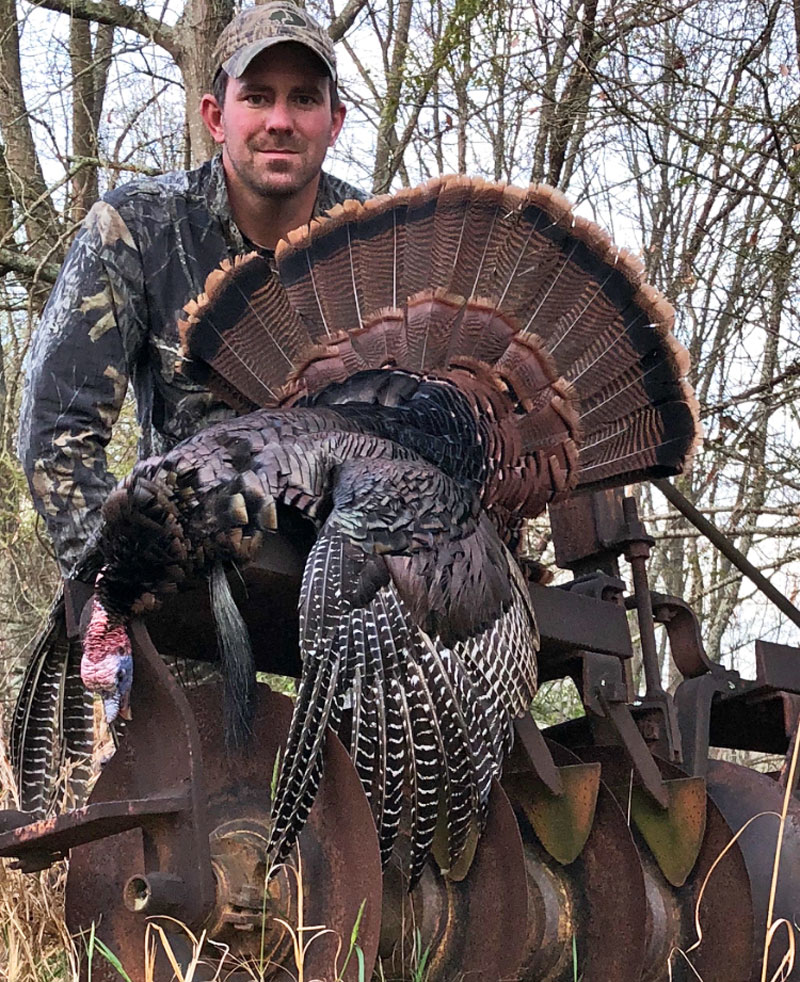
Darrell Madden of Semora, N.C. has faced this decision many times, and he makes his decision based on years of experience.
“Every gobbler must be treated individually, but I do have guidelines I consider,” he said. “If I’m getting gobbles from a bird that I cannot see, and he’s locked into the same basic location, I don’t move at first. He could be henned up or just being ornery, but I’ll use different calls and give him every chance to approach.”
What’s in the way?
If the bird continues to stall, Madden will figure that a barrier such as a creek or other object may be in play. If he can remain hidden from the gobbler while moving, he’ll slip out, circle, cross the barrier, get on the gobbler’s favored turf and set up again.
“I don’t want to try to force a gobbler to do something he is resisting,” he said. “That seldom ends well for the hunter.”
If Madden has the gobbler in sight — such as a longbeard strutting in a field — he may try “fanning’ with a gobbler’s tailfeathers to pique the bird’s curiosity.
“Couple that with some hen calls, and often he’ll approach,” he said. “The tail fan makes him more comfortable in the sense that the hen he can hear but can’t see is accompanied by a gobbler he can see.”
If a bird gobbles and walks away, he’ll make a move to circle and get in front of the gobbler. If he has a good idea where the gobbler is headed, he’ll arrive first and be set up and ready.
“But experience has taught me that trailing a gobbler, even at a safe distance where I can’t be seen, and trying to call him back to a spot he just left is a low-percentage option.”
Military mission strategy
Chappell said he’ll make a military-style move on gobblers when they occasionally gobble at his calls and randomly at other sounds in the woods, but are moving as if on a specific mission.

“It’s simply they have a single-minded purpose at that particular moment,” he said. “I don’t take it personal; it’s just what gobblers do. I’ll move and flank them and track their progress via the occasional gobble at my locator calls or real crows or other noises. I’ll set up where the gobbler only needs to make a minor course adjustment, if any at all, to approach my position, using subtle calls to finish him. For the gobbler, it may be a quick detour rather than a total commitment, but this can get him in range.”
A go-to call at crunch time
This is the ace-in-the-hole play for a gobbler that’s needs a little something extra to make a full commitment to approach your position.
“Diversity in the use of calls is an excellent skillset for hunting turkeys,” Chappell said, “but sometimes a gobbler is gonna need those soft purrs and clucks to make a binding commitment, and every hunter needs a go-to call to make realistic sounds under intense pressure.”
Madden said often on a run-and-gun hunt, no time exists for a decoy setup; he has to simply plop down in an instant.
“If hunting alone, I prefer a mouth call because of lack of movement with a gobbler in tight but not quite close enough,” he said. “It can be done with a friction call if a hunter can hide hand movement and still be able to get the gun into position. If calling for another hunter, a friction call works beautifully.”
Advanced gizmos provide an edge
Knowing exactly where a gobbler is at a specific time is a wonderful asset in planning a strategy. That technology exists, and Andy Shaw of Fountain Inn, S.C., employs it while hunting.
“Success is often a matter of location and knowing where the gobbler is,” Shaw said. “I’ve started using game cameras strategically placed on food plots that are linked to my cell phone. The cameras are motion-sensitive and when a turkey walks into that plot, I instantly have a photo and know his precise location.”
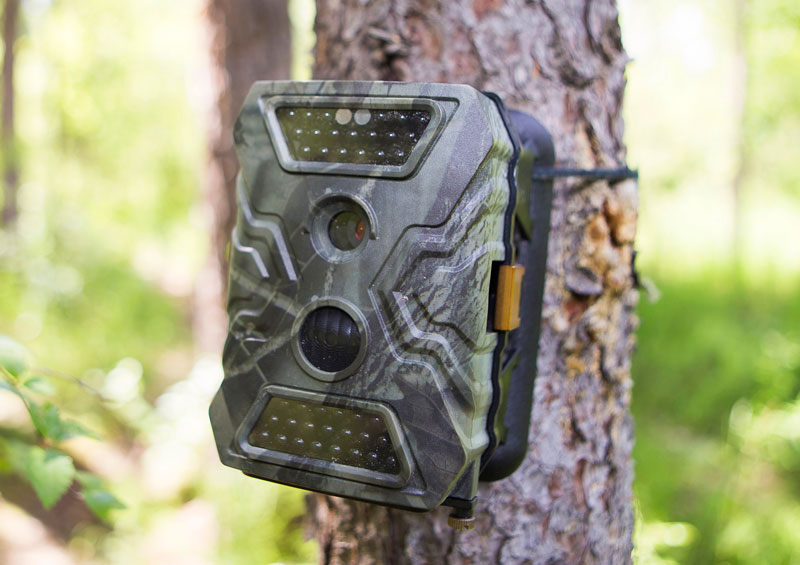
Shaw said he knows his property well and can quickly reach that spot, approaching from a direction that won’t bump the gobbler and setting up quietly before making the first call.
“It helps knowing the position of the gobbler,” he said. ”It enables me to set up in the perfect position to see him if he approaches.”
Shaw said gobblers often will move in silent in this scenario, but he’s highly vigilant because he knows the odds are significantly enhanced. He’ll see the gobbler slipping in because he’s expecting it.
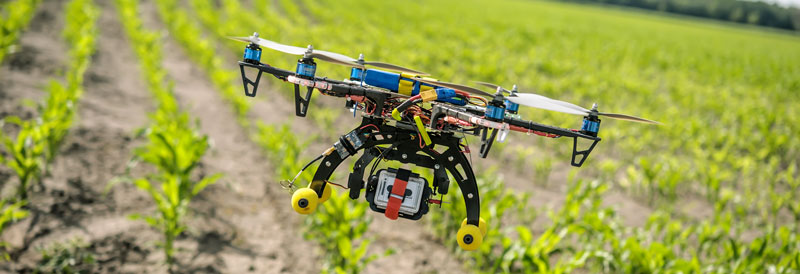
Another tactic he employs is using aerial drones to scout multiple areas while hunting.
“I’ll use a drone to check multiple food plots during the course of a hunt,” he said. “I don’t have to get close to the field, because I can scout them from a distance with the drone. I’ll see turkeys in a field, see the exact position and often the direction they’re moving. With that information, I can make a stealthy approach and be in the best position to call.”

